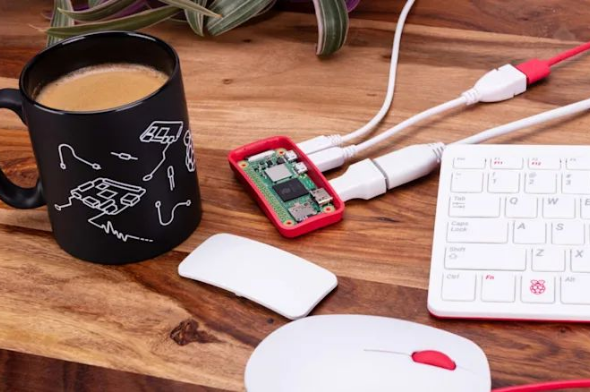Connection to DriversCloud Create a DriversCloud.com account Reset your DriversCloud.com password Account migration
Raspberry Pi Zero 2 W: the most compact Raspberry Pi gains a lot of power
Between shortage of components and high demand, the Raspberry Pi foundation always finds something to innovate.
The situation for all players in the semiconductor world is complicated. Even the Raspberry Pi Foundation and its single-board nano-computers have to deal with major shortages and rising prices for many components. As an immediate consequence, the Raspberry Pi 4 Model B is forced to revise its technical specifications. A few months ago, the 1GB RAM version disappeared from the Raspberry Pi catalog and the 2GB version was placed at its price level. A version with 8 GB was also released, illustrating the relatively low cost of DRAM. This is clearly no longer the case today and if the 2 / 4 / 8 GB versions are still on the menu, the smallest one sees its price rise sharply, from 35 to 45 dollars. In addition, the 1GB version is making a comeback to occupy the $35 segment.
Fortunately, it's not all bad news for Raspberry Pi enthusiasts as the foundation has decided on a redesign for its most compact model. Launched in 2017, the Raspberry Pi Zero W is designed around an even smaller PCB than the Raspberry Pi 4 Model B, measuring 65 x 30 millimeters. So the foundation set out to evolve the beast by distributing the Raspberry Pi Zero 2 W. Of course, it retains the dimensions of its big brother, but highlights a remarkable increase in power: the single board is actually designed around the Broadcom BCM2710A1 SoC, the same one found in the Raspberry Pi 3. Excuse the pun. However, the beast is slightly underclocked (1 GHz) and given the current prices, you have to deal with "only" 512 MB of LPDDR2 SDRAM, as much as on the Raspberry Pi Zero W. In reality, this is a rather adequate amount of memory on such a machine.
The Raspberry Pi Foundation insists on the renewed power of its machine, which should reach " up to five times the performance " of the Pi Zero W. For the rest, the single board is quite similar to its predecessor. It incorporates the same WiFi 4 controller (IEEE 802.11 b/g/n) and slightly evolves the Bluetooth that goes to 4.2 with Bluetooth Low Energy still in the program. No USB 3.0 port on this new Zero, only 2.0, however, we enjoy a MicroSD card reader, a mini HDMI port, a CSI-2 camera connector and the inevitable 40 "pins" HAT-compatible input / output interface. The Zero 2 W is available now in the UK, EU and North America for £13.5, €16.5 and $15 respectively. Finally, the Raspberry Pi Foundation insists that " almost all cases and accessories designed for the Zero should work perfectly with the new board, including our own case and cables.







